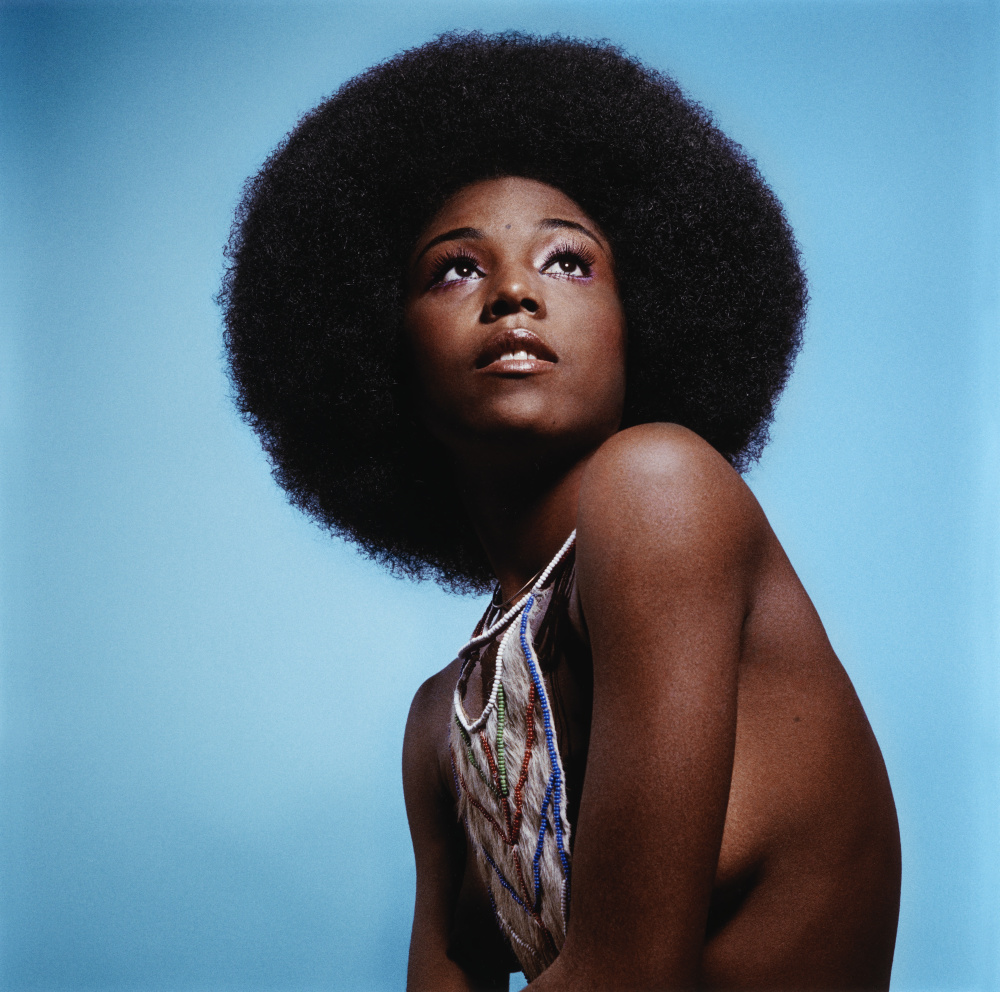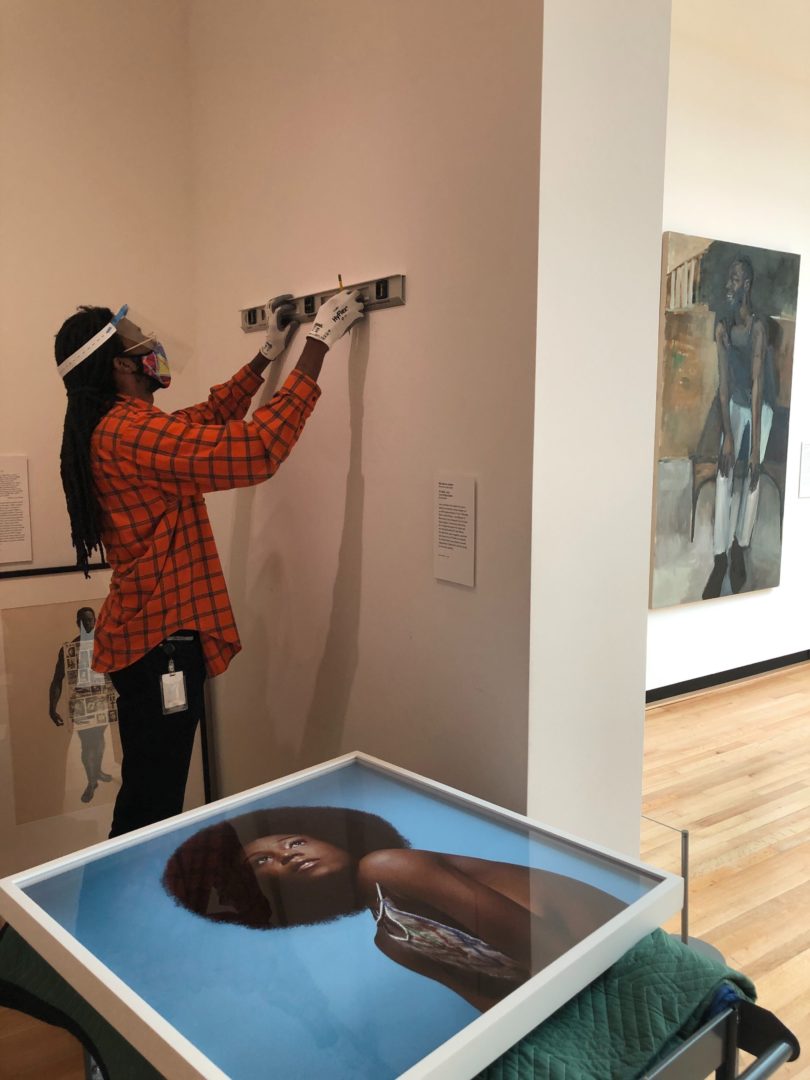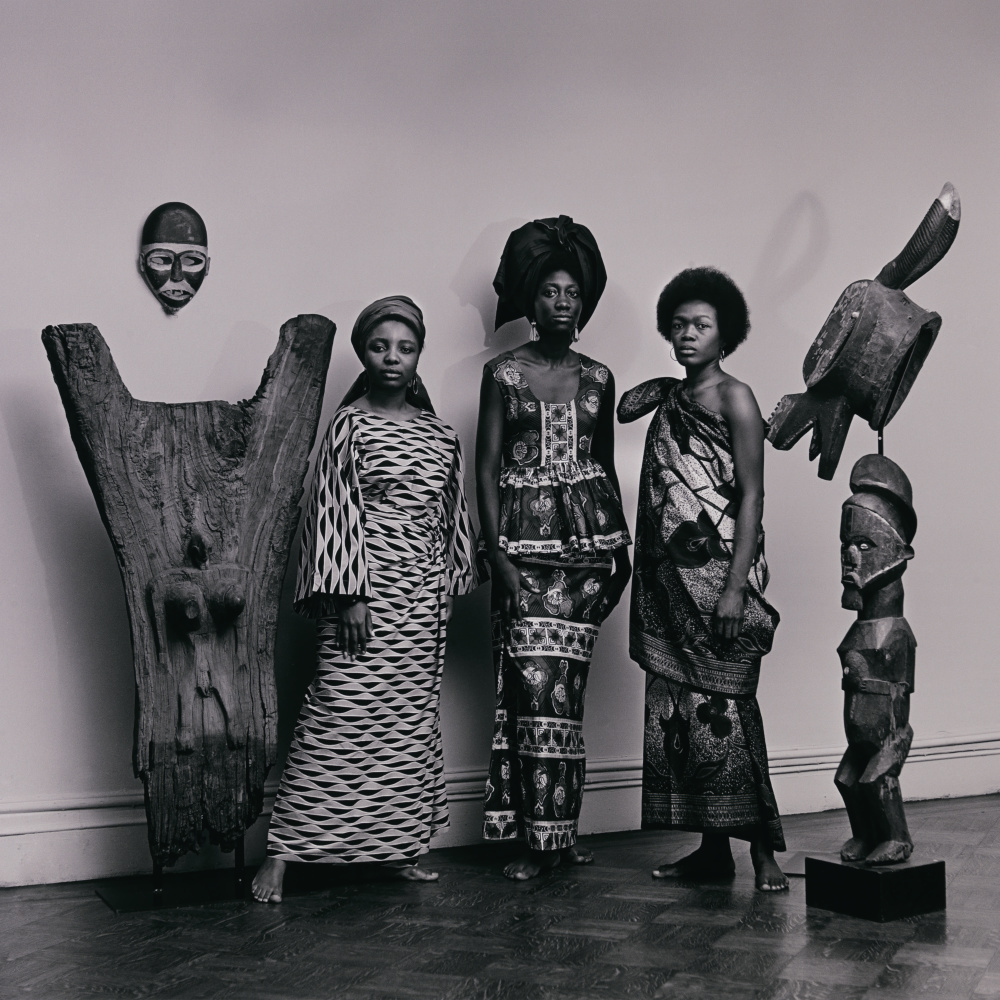- Open today, 10 am to 5 pm.
- Parking & Directions
- Free Admission
Objects of the Week: Kwame Brathwaite Photographs

Kwame Brathwaite (American, born 1938), Untitled (Model who embraced natural hairstyles at AJASS photoshoot)
1970, printed 2018, Archival pigment print, Museum purchase, in memory of Alice R. and Sol B. Frank © Kwame Brathwaite, 2019.34.3
In 2019, the Chrysler Museum added four works by photographer Kwame Brathwaite to the permanent collection. Two of the photographs are now on view at the Museum–one in the McKinnon Modern & Contemporary Wing (G225) and one in the African gallery (G110). Untitled (Model who embraced natural hairstyles at AJASS photoshoot) and Untitled (Grandassa Models, Merton Simpson Gallery) add to the Museum’s growing holdings in African American photography. The color and black-and-white pictures were selected from Brathwaite’s massive historical portfolio of images taken during the 1960s and 1970s and include a self-portrait and photoshoots with models.

Museum preparator, Mensah Bey, installing Untitled (Model who embraced natural hairstyles at AJASS photoshoot) in Gallery 225.
Brathwaite and his brother Elombe founded the African Jazz Society and Studios (AJASS) and the Grandassa Models in the late 1950s. The siblings were entrepreneurs, artists, and political activists promoting self-pride within African Americans through breathtaking imagery of models, writers, musicians, and political leaders. “We’ve got to do something to make the women feel proud of their hair, proud of their blackness,” Brathwaite once said. The photographer and members of AJASS and Grandassa are credited with developing the iconic 1960s rallying cry, “Black is Beautiful.” Brathwaite’s works complement the Museum’s existing collection of Civil Rights photography and African American beauty culture.[1]

Kwame Brathwaite (American, b. 1938), Untitled (Grandassa Models, Merton Simpson Gallery), ca. 1967, printed 2017, Archival pigment print, Gift of Philip Martin and Portia Hein, © Kwame Brathwaite, 2019.34.2
In both Untitled (Grandassa Models, Merton Simpson Gallery) and Untitled (Model who embraced natural hairstyles at AJASS photoshoot) African American women are depicted wearing afros and headwraps, often donning Afrocentric designs. The former depicts Grandassa models wearing Ankara prints (wax prints produced in West Africa) with various west and central African art objects surrounding them within the Merton Simpson Gallery. The Merton Simpson Gallery was of note as it was one of the only African American-owned galleries focused on African art. Simpson (1929–2013) was an artist, collector, and art dealer. He started his gallery in the 1950s and was considered one of the most important dealers of traditional African art in the U.S. during the 1960s and ‘70s.[2] Brathwaite’s photograph not only showcases African American models but also references African art history and culture and African American artistic leaders.
In the photographer’s latter image, a Grandassa model gazing up into the distance is semi-nude, wearing a large feathered necklace and an afro. Brathwaite wanted African Americans to see and embody the beauty within themselves—their skin color, hairstyles, and facial features. This was especially important as Eurocentric notions of beauty were—and still are—the mainstream standards. During the mid-twentieth century, there were few examples of African American models. Sara Lou Harris was one of the first African American models to garner a national advertising campaign with Lucky Strike cigarettes in the 1940s.[3] Other prominent models such as Donayle Luna, Naomi Sims, and Pat Cleveland came later, mostly during the later 1960s and 1970s, but still subscribed to the mainstream beauty standards.
The Grandassa models were different because they challenged the existing societal constructions of beauty. The Brathwaite brothers focused on finding models already wearing natural styles. Though activists such as Angela Davis also wore natural hairstyles, the look was not the norm in the early 1960s, especially in public. “It was revolutionary. During that time—the 1950s and 60s—it was unacceptable to wear your hair in any natural hairstyle. The point that was being made was that you can be your natural self and be proud of who you are and not accept another person’s standard of beauty as your own.”[4]
Brathwaite’s images allow the Chrysler to promote the work of contemporary artists while also highlighting U.S. history. The Museum purchased two of the artworks. The remaining two that were recently added to the collection were gifts from Philip Martin and Portia Hein, the artist’s gallery. The Chrysler is thrilled to have these photographs in the collection. Not only are they breathtaking images, but they also reflect a legacy of artists wanting to promote African American beauty, culture, style, and political activism. These images will teach visitors much and provide opportunities for the Museum to highlight other works in the permanent collection.
—Kimberli Gant, PhD, McKinnon Curator of Modern & Contemporary Art
[1] Kwame Brathwaite, “Kwame Brathwaite’s Grandassa Models,” The New Yorker, March 11, 2019. https://www.newyorker.com/magazine/2019/03/18/kwame-brathwaites-grandassa-models
[2] Bruce Weber, “Merton D. Simpson, Painter, Collector, and Dealer in African Art, Dies at 84,” The New York Times, March 14, 2013. https://www.nytimes.com/2013/03/14/arts/design/merton-d-simpson-artist-and-gallery-owner-dies-at-84.html
[3] https://www.harlemworldmagazine.com/diva-sara-lou-harris-columbia-grad-first-black-model-featured-national-ad-campaign/
[4] Brandi Fowler, “We Started the Trend: The Grandassa Models were making sure we knew ‘Black is Beautiful’ long before Rihanna brought them to the mainstream.” https://hellobeautiful.com/3052073/grandassa-models-and-rihanna/

